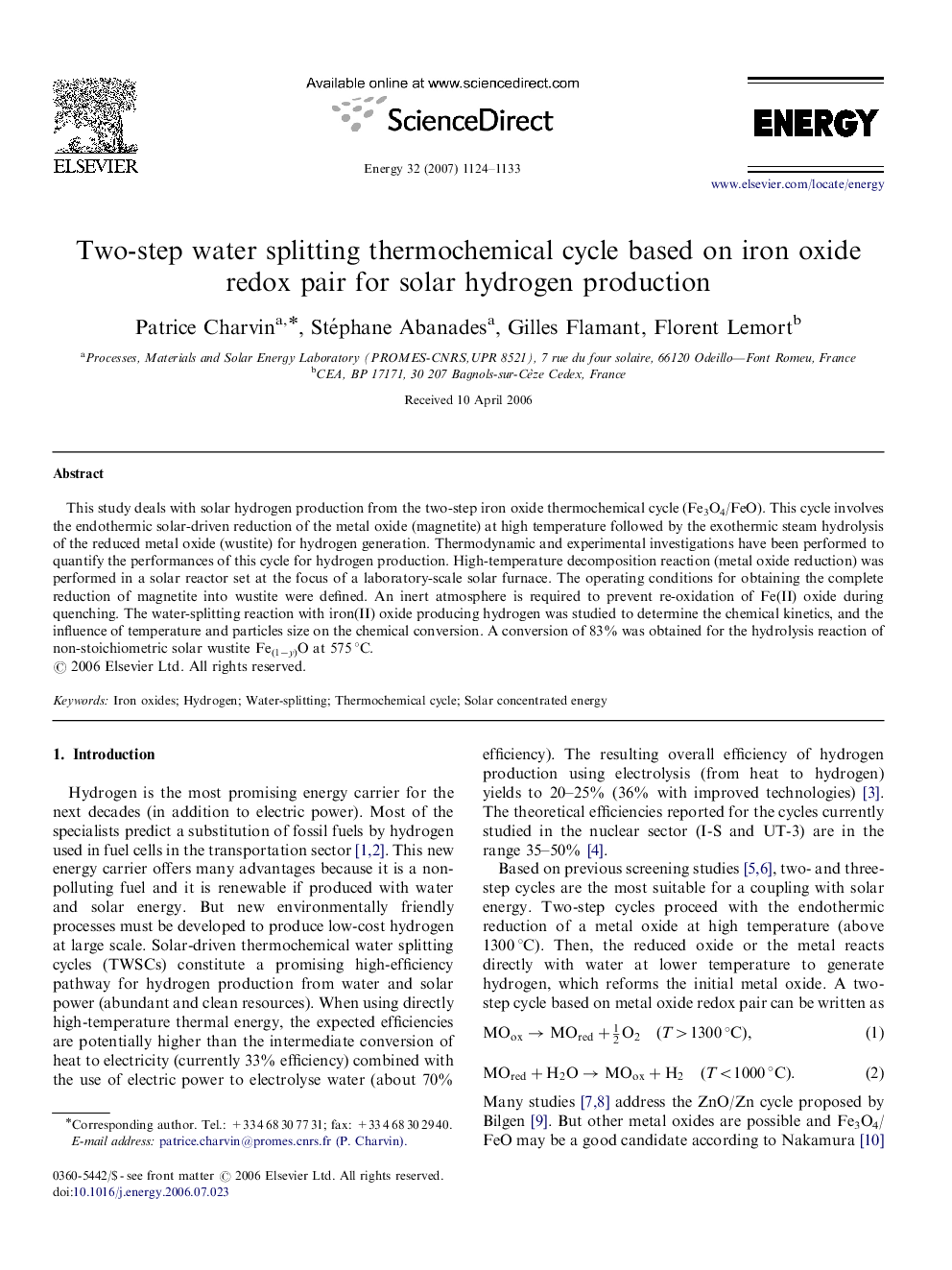| Article ID | Journal | Published Year | Pages | File Type |
|---|---|---|---|---|
| 1735818 | Energy | 2007 | 10 Pages |
This study deals with solar hydrogen production from the two-step iron oxide thermochemical cycle (Fe3O4/FeO). This cycle involves the endothermic solar-driven reduction of the metal oxide (magnetite) at high temperature followed by the exothermic steam hydrolysis of the reduced metal oxide (wustite) for hydrogen generation. Thermodynamic and experimental investigations have been performed to quantify the performances of this cycle for hydrogen production. High-temperature decomposition reaction (metal oxide reduction) was performed in a solar reactor set at the focus of a laboratory-scale solar furnace. The operating conditions for obtaining the complete reduction of magnetite into wustite were defined. An inert atmosphere is required to prevent re-oxidation of Fe(II) oxide during quenching. The water-splitting reaction with iron(II) oxide producing hydrogen was studied to determine the chemical kinetics, and the influence of temperature and particles size on the chemical conversion. A conversion of 83% was obtained for the hydrolysis reaction of non-stoichiometric solar wustite Fe(1−y)O at 575 °C.
